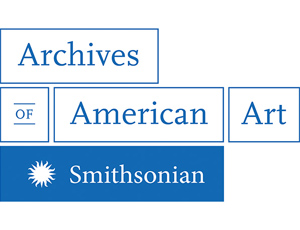Streamlined and Sonic: John Vassos and Instrument Design
/https://tf-cmsv2-smithsonianmag-media.s3.amazonaws.com/blogging/featured/AAA_vassjohn_68511_SIV.jpg)
Much has been written about the history of industrial design as it pertains to automobiles and objects of use. However, in some rare cases, industrial designers also ventured into musical instrument design. Notably, automobile designer Raymond Dietrich was hired by Gibson Inc. and designed their Firebird and Thunderbird electric guitars. Gibson also hired the team of Barnes and Reinecke to design their Ultratone lap-steel guitar. Robert Davol Budlong, a designer for Zenith, worked with the accordion manufacturer Scandalli to reinvent several of their instruments. These outsourced business relationships were unusual; most instrument manufacturers used in-house staff to design their instruments. These collaborations indicate that instrument manufacturers wanted to modernize and monetize their products by hiring specialist designers who paid close attention to trendy colors, styles, ergonomics, and new technologies. These fashionable new products were often more affordable than their predecessors, due to the rise of mechanization and mass production.
My current research delves into investigating musical instrument manufacturers and the industrial designers they hired to reimagine their products. In May of 2018, I visited the Archives of American Art in search of clues regarding the relationship between industrial designer John Vassos (1898–1985) and the German musical instrument manufacturing company, M. Hohner. While working as a curatorial research fellow with the musical instrument collection at the Museum of Fine Arts, Boston, I began researching instruments designed by Vassos, and was drawn to his modernist and streamlined harmonicas and accordions, and their importance in music and design history.
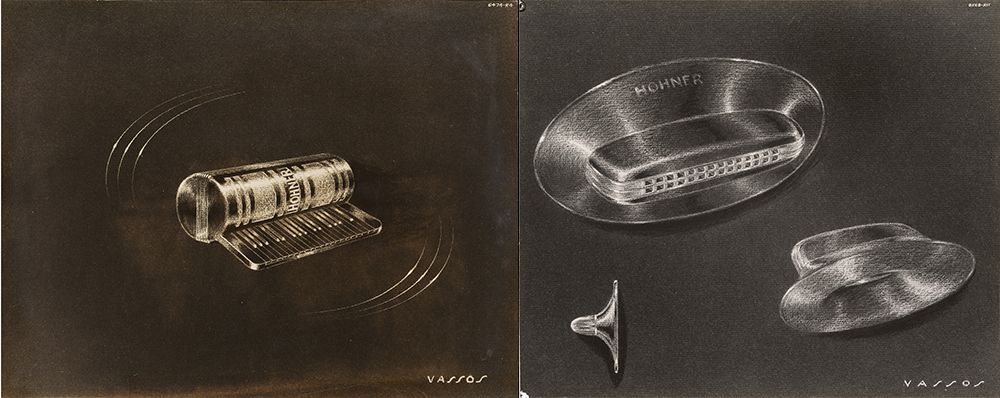
While reading Danielle Shapiro’s 2016 biography John Vassos: Industrial Design for Modern Life, I was thrilled to find out that Vassos’ work with Hohner was documented in John Vassos’ papers at the Archives of American Art. Drawings, technical schematics, advertisements, and various correspondence from the collection shed light on their collaboration, and show many innovative designs that were never manufactured.
In the late 1930s, and beginning again in the late 1940s, John Vassos was hired by Hohner to design harmonicas and accordions with his signature modernist and streamlined aesthetic, primarily aimed toward the American market. As I explored over forty drawings of harmonicas that Vassos made for Hohner, I was taken by how sleek these instruments looked compared to Hohner’s earlier, boxier counterparts. Vassos’ design drawings feature marks resembling air whooshing past his harmonicas—musical spacecraft traveling through the galaxy of his imagination. Norman Bel Geddes may have been the first to coin the term “streamlining” in the design world, but Vassos also utilized this concept in his drawings. However whimsical and novel these designs are, we learn from Vassos’ correspondence with Hohner that after World War II, the company wasn’t equipped to reinvent every part of the instrument. Some of the more unique designs that would have required new machinery and rationed materials were never made. According to Kim Field’s book Harmonicas, Harps, and Heavy Breathers, materials like brass were being rationed for munitions, so it was difficult to acquire the alloy for harmonica reeds, for example. When Vassos was hired, Hohner was trying to recover from their losses during World War II.
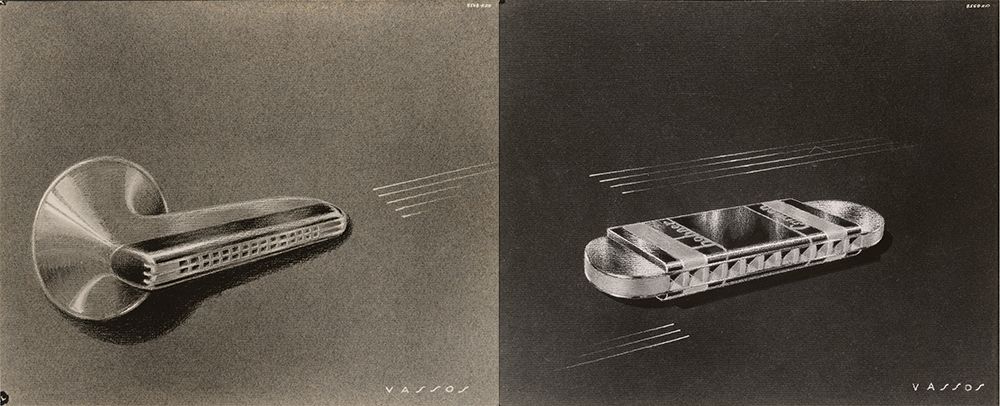
Archival correspondence and patents show that Vassos believed his stylish harmonica designs improved on the historically rectangular model, like that of Hohner’s popular Marine Band, whose design has changed very little over time. Vassos’ use of curved angles with bright and fashionable paint combinations make these playable instruments look like works of art. Shapiro writes that “Vassos was also thinking about ergonomics and the way humans interact with objects.” In his design patents, Vassos states that he believes his ergonomic improvements made the instrument easier to hold, and the curved mouthpiece made it more comfortable for the player’s lips. Of these designs, three patented instruments are known to have been manufactured and sold: the Echo Elite, the Regina, and the Comet. The Regina and the Comet were also marketed as the Echo Elite.

The red and chrome Echo Elite harmonica was made in three sizes and in varying keys. It is a tremolo harmonica, which means that the reeds are tuned slightly off from each other, creating a sound that wavers and oscillates in pitch. The most popular iterations were dual-pitch models with the key of G on one side and C on the other, but some instruments were playable only on a single side. The instrument’s shape was also reminiscent of buses and trains from this time, like General Motors’ Futureliner bus: red with horizontal, parallel chrome lines. Even the case was streamlined and sleek, made from both aluminum and cardboard with the addition of blue. Of the three harmonicas designed by Vassos, the red and chrome Echo Elite achieved the most commercial success. The next model was the Regina, which came in brown, green and red, and also brown, blue and red. Finally, the teardrop-shaped Comet harmonica, patented in 1939, was manufactured in red, green, and blue, its name Comet evoking a Space Age aesthetic. Decades before the space race and the advent of Googie architecture, Vassos was reimagining objects with sleek silhouettes and functional and ergonomic components which now seem spacey and futurist.
Unlike other Hohner harmonicas with more simple cases, Vassos took great care in designing complementary cases for the instruments. As Shapiro explains,
The promotional use of packaging—that is, as a way of selling an item beyond advertising—reveals the industrial designer’s job as more than that of mere package designer. As Vassos wrote: ‘The styling and designing of a product is not where the work of the industrial designer stops. Promotion and presentation after the styling and designing have been done are equally important and are a very definite part of the industrial designer’s job.’
Vassos often included case designs in his preliminary drawings as standalone pieces, indicating they were designed with the same care and attention the instruments themselves received. And with the three harmonica models that were manufactured, their cases also featured curved lines, matching colors, and metallic finishes which enhanced the look and aesthetic of the instruments they held.
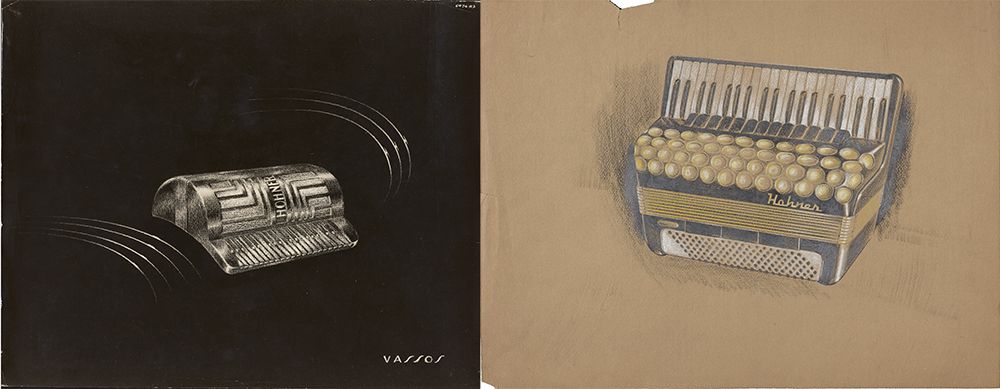
In 1938, Vassos patented his Round model accordion, designed for Hohner. His aim was to make the instrument more ergonomic by having the instrument curve with the player’s torso, as if hugging them. At that time, accordions were boxier in shape (as are most modern accordions), and the player had to point their elbows outward to have access to the full range of buttons and keys. The Hohner Museum in Trossingen, Germany owns two prototypes of the Round model patented design from 1940. This instrument was never made for the market or mass produced, and the reasons why are unclear. Hohner does not have any correspondence or documentation citing why it was not produced.
Beginning in 1948, Hohner once again called on Vassos to design a new accordion for them. Archival documents in the Vassos collection shed light on their business relationship. From his correspondence with Hohner, we learn that Vassos was hired as a consulting designer in 1948 for two years, at an annual fee of $6,000 (significantly lower than his price for other organizations). Essentially, he gave Hohner his “friends and family rate,” as he wrote on March 31, 1948 to Matthew Hohner:
As you know Matty, my business associates are always my friends. I do not look upon our relationship as just an account. I always become vitally interested and continually think of the product as though it were my own business. I do not operate on a large scale nor do I have many accounts. I am only interested in a small selected group, each one of whom I do a real professional job.
The Archives also has letters requesting receipts that date from the early 1960s, so his contract was seemingly extended for at least another decade. I also found annotated advertisements and technical drawings of existing Hohner accordions with Vassos’ notes. Vassos was doing market research on Hohner’s products, and those of its competitors. He underlined key terminology in the written advertisements relating to producing a medium-sized instrument designed for women.
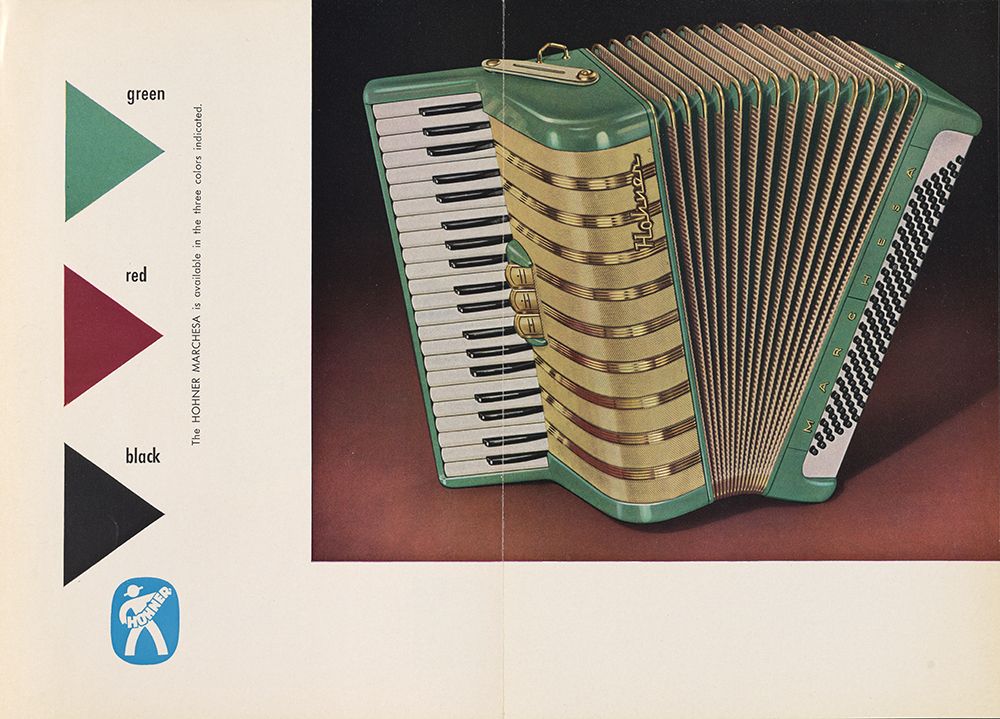
In a photograph, Vassos posed with his finished product, the Marchesa accordion, which took him almost a year and a half to design. A clipping from an unidentified newspaper dated November 18, 1955, focused on Vassos and his accordion.
Taking its cue from US automobile makers, the Hohner company adopted modern colors to dress this reed instrument which were chosen for their ability to blend with today’s fashions and fabrics. Now the American woman may have a gold trimmed accordion in seafoam green or burgundy red as well as the traditional black which is of course, also suitable for men.
The matte color scheme and sleek gold trim was unusual for this period, as most accordions were covered in pearlized plastic and excessively sparkly rhinestones. The article continues, stating that by “combining simplified construction [and] new light materials to lessen weight while increasing strength, and the traditional Hohner technical excellence, the ‘Marchesa’ represents the first direct appeal to the American women’s and young people’s market.” Close examination of the Hohner Marchesa from the Museum of Fine Arts reveals that the keys on the keyboard are narrower than other instruments. According to Marion Jacobsen’s book Squeeze This!: A Cultural History of the Accordion in America, beginning in the 1940s, many manufacturers made “ladies accordions” with narrower keys, and the Marchesa’s keyboard fit this mold. The claims may have been a bit exaggerated. Specifically, the instrument does not feel much lighter in weight than the competition. The new materials may have shaved off a bit of weight, but like most accordions, the Marchesa is quite heavy, weighing in at twenty-four pounds.
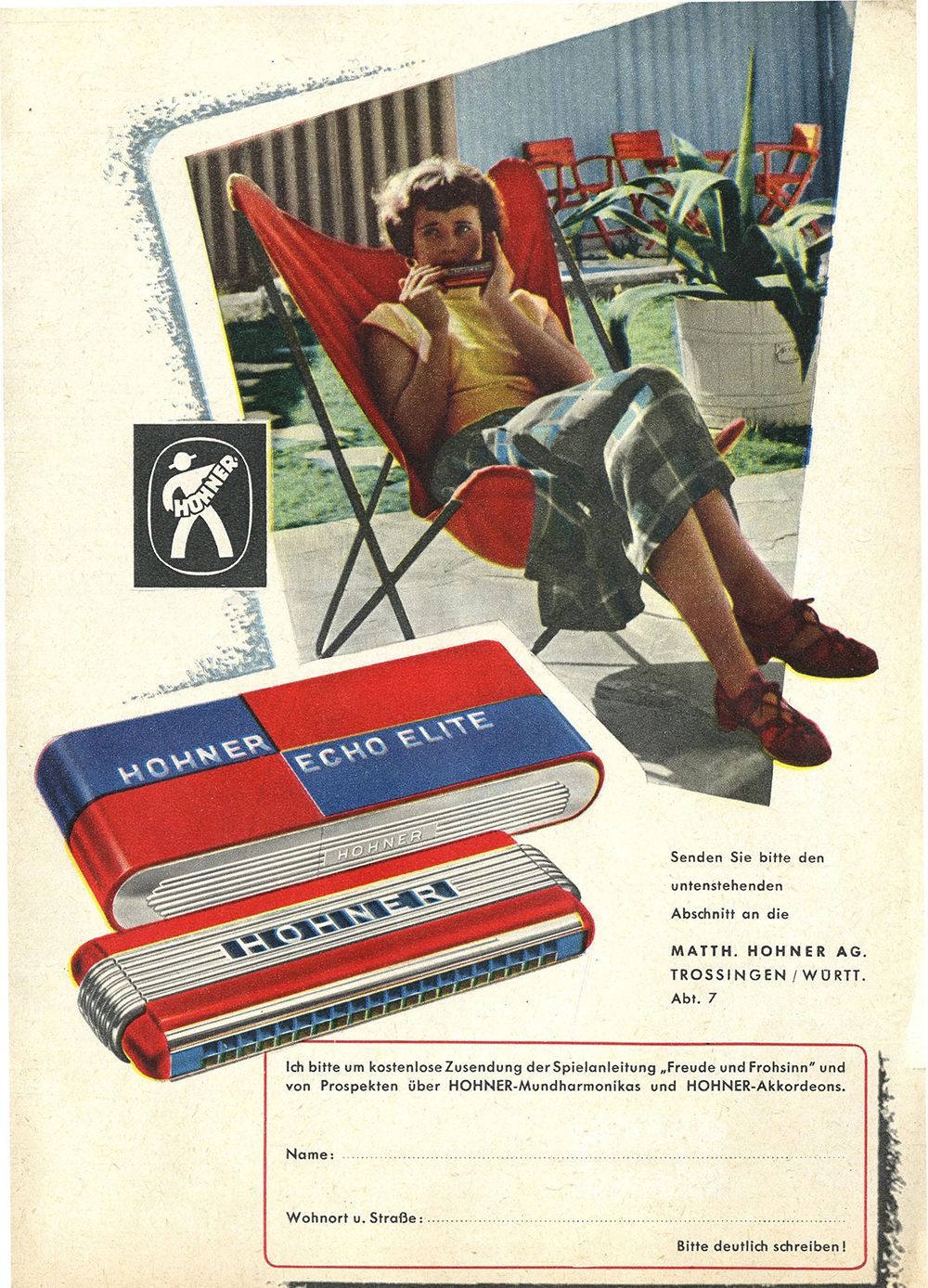
During this time period, accordions and harmonicas were popular instruments in both the amateur and professional spheres. An advertisement from 1954 shows the red and chrome Echo Elite selling for $8.50–$12.50, which in today’s market is the equivalent of about $80–$120. This price is comparable to those of similar harmonicas of the time. Vassos’ Marchesa accordion sold for $300 in 1959, equivalent to about $2,600 today.
While these prices were in line with other similar models, these instruments were not cheap. Vassos’ instruments achieved a modicum of commercial success and influenced future designs of Hohner and other manufacturers. His influence is seen especially in later instruments’ curved lines, incorporated chromatic buttons, and sleek chrome color. Vassos’ work engendered more experimentation with new curved shapes and color schemes not only by Hohner, but by other manufacturers as well. While these instruments may not have been the favorite with performers, they are musically modern artifacts from a time where experimentation with design and manufacturing changed the way companies created their products. Vassos’ designs endure today, and are sought after by major museums as essential pieces of industrial design history.
This post originally appeared on the Arcvhies of American Art Blog.
In 2019 we are celebrating the Smithsonian Year of Music, which highlights and shares the institution’s vast musical holdings, bringing together our resources in history, art, culture, science, and education. Learn more at music.si.edu.